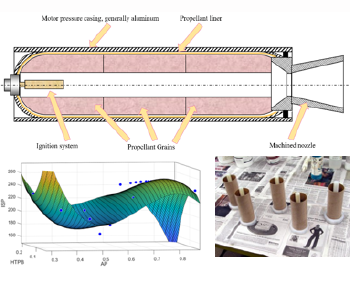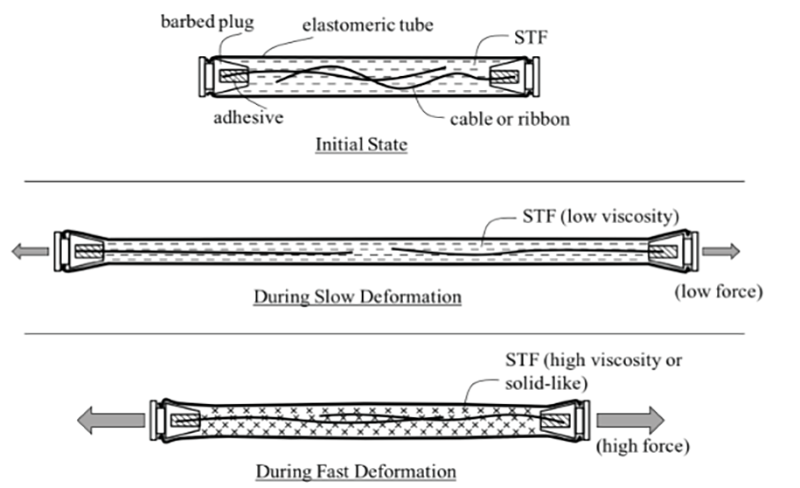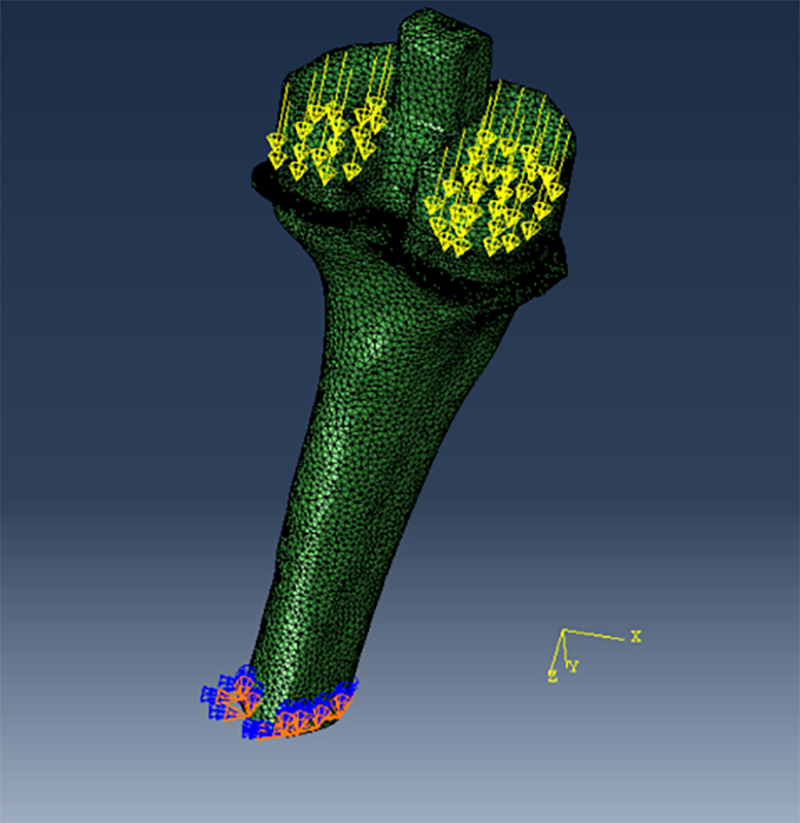MENG 471/473 Projects - Fall 2019
In MENG 471/473, students work on independent projects that cover a wide range of topics, from traditional mechanical engineering topics (e.g., mechanical device design, fluid flow, and materials analysis) to interdisciplinary topics at the interface between mechanical engineering and other branches of engineering such as biomedical, chemical, electrical, or environmental engineering. Under the supervision of faculty advisers, students investigate physical phenomena through experimental measurement and/or numerical simulation, and they design and construct functioning prototypes to solve engineering problems. The majority of the faculty advisers come from within the mechanical engineering department, with the remaining advisers distributed across the University (and occasionally outside the University). Funding for projects is generously provided by the Yale SEAS Dean's Office and, in some cases, through the faculty advisers. The students were asked to write the following short summaries two-thirds of the way through the semester, when they still had a few weeks to go on their projects. All projects are represented here, except for those that cannot be publicized due to information of a proprietary nature.
Mapping the High Entropy Alloy Space in High-Throughput
Pamela Banner
Adviser: Prof. Jan Schroers, Mechanical Engineering & Materials Science
 In the last 20 years, the field of alloy research greatly expanded with the discovery of a new materials class: high entropy alloys. These revolutionary alloy materials are composed of five or more elements at roughly equiatomic compositions. They often exhibit properties desirable in structural engineering applications, such as high yield strength and high temperature resistance. However, the first step is to identify and characterize a sufficiently large number of alloys, including understanding their underlying physics. There are on the order of 108 potentially useful alloys to discover. The aim of this project is to collect data on 103 new quinary high entropy alloys and establish composition-structure-property relationships. Our lab’s unique ability to maximize sample production rate is thanks to the combinatorial sputtering method producing silicon wafers with 177 unique alloys at a time. We then use energy dispersive x-ray spectroscopy (EDX) to quantify the atomic composition of each and synchrotron based x-ray diffraction (XRD) to identify the present crystal structure. We hope to map ternary phase diagrams for the 103 alloys we are studying and validate previous work suggesting new compositions prefer body-centered cubic (BCC) structures when constituent elements have large atomic size differences.
In the last 20 years, the field of alloy research greatly expanded with the discovery of a new materials class: high entropy alloys. These revolutionary alloy materials are composed of five or more elements at roughly equiatomic compositions. They often exhibit properties desirable in structural engineering applications, such as high yield strength and high temperature resistance. However, the first step is to identify and characterize a sufficiently large number of alloys, including understanding their underlying physics. There are on the order of 108 potentially useful alloys to discover. The aim of this project is to collect data on 103 new quinary high entropy alloys and establish composition-structure-property relationships. Our lab’s unique ability to maximize sample production rate is thanks to the combinatorial sputtering method producing silicon wafers with 177 unique alloys at a time. We then use energy dispersive x-ray spectroscopy (EDX) to quantify the atomic composition of each and synchrotron based x-ray diffraction (XRD) to identify the present crystal structure. We hope to map ternary phase diagrams for the 103 alloys we are studying and validate previous work suggesting new compositions prefer body-centered cubic (BCC) structures when constituent elements have large atomic size differences.
Solid Rocket Motor Design: Theory and Formulation of an APCP Propellant with Simulated Motor Design
Alexander C.C. Hoganson
Adviser: Prof. Alessandro Gomez, Mechanical Engineering & Materials Science
 Ammonium perchlorate and hydroxyl-terminated polybutadiene are the primary components of solid propellants known as APCP used in rocket motors. While commonly used in both the professional rocket industry and among enthusiastic hobbyists, there currently exists no substantive literature that addresses the theoretically complex engineering theories and the technical applications of APCP propellants. This research project aims to fill that void by focusing on the transition between chemical propulsion theory and practice. The overall goal is to comprehensively explore and characterize the design, development, and simulation procedures for APCP rocket propellant and subsequent motor integration. The research initially combined RPA–C software and first principles and applied them to theorize the efficiencies of different propellant chemical compositions. Next, the research used MatLab graphing structures to theoretically optimize propellant composition. Then, research and curve fittings were performed to find burn rate exponent approximations for different propellants. Simultaneously, theories of chemical propulsion were used to design combustion chambers and optimized rocket nozzles. Finally, the data was iterated in BurnSim to produce optimized thrust curves for each propellant type. The analysis performed has verified the common use of aluminum and magnesium as energetic additives to APCP motors and produced a theoretically optimized formula for each.
Ammonium perchlorate and hydroxyl-terminated polybutadiene are the primary components of solid propellants known as APCP used in rocket motors. While commonly used in both the professional rocket industry and among enthusiastic hobbyists, there currently exists no substantive literature that addresses the theoretically complex engineering theories and the technical applications of APCP propellants. This research project aims to fill that void by focusing on the transition between chemical propulsion theory and practice. The overall goal is to comprehensively explore and characterize the design, development, and simulation procedures for APCP rocket propellant and subsequent motor integration. The research initially combined RPA–C software and first principles and applied them to theorize the efficiencies of different propellant chemical compositions. Next, the research used MatLab graphing structures to theoretically optimize propellant composition. Then, research and curve fittings were performed to find burn rate exponent approximations for different propellants. Simultaneously, theories of chemical propulsion were used to design combustion chambers and optimized rocket nozzles. Finally, the data was iterated in BurnSim to produce optimized thrust curves for each propellant type. The analysis performed has verified the common use of aluminum and magnesium as energetic additives to APCP motors and produced a theoretically optimized formula for each.
Optimizing Rate Activated Tethers
Aidan Hynes and Laura Wayland
Adviser: Prof. Eric Brown, Mechanical Engineering & Materials Science
 A rate activated tether is a piece of technology that relies on the unique properties of shear thickening fluids. These fluids will exhibit different properties based on the level of shear stress that is applied to them. They exhibit liquid-like properties when a small shear force is applied to them, but when a large shear stress is applied to these fluids they start to exhibit solid-like properties. These unique properties make these fluids and their use in rate activated tethers particular promising for impact protection. This project is centered around the idea of optimizing these rates activated tethers to achieve the highest level of impact protection possible when they are used in applications like football helmets. In order to optimize these tethers, we will examine how a variance in the length of a tether, in the thickness of the rubber tubing, in the size of the interior ribbons and in the stiffness of the rubber tubing will have an impact on parameters important for impact protection. Once such parameter will be the level of normal stress that is felt in these tethers as we expect this to depend on the thickness and stiffness of rubber tubing. The second portion of this project centered around the design and completion of a drop testing fixture that meets NOCSAE testing standards. The fixture was optimized to fit within the ceiling height of the lab while still having impact speed capabilities up to 5.5 m/s to meet the NOCSAE requirements. A slingshot mechanism was added to this fixture to increase drop testing speeds to approximately 9m/s, well over the minimum requirements for football helmet testing. Future testing will utilize this fixture to test how various rate activated tether combinations and webbing will respond to impact at a variety of angles.
A rate activated tether is a piece of technology that relies on the unique properties of shear thickening fluids. These fluids will exhibit different properties based on the level of shear stress that is applied to them. They exhibit liquid-like properties when a small shear force is applied to them, but when a large shear stress is applied to these fluids they start to exhibit solid-like properties. These unique properties make these fluids and their use in rate activated tethers particular promising for impact protection. This project is centered around the idea of optimizing these rates activated tethers to achieve the highest level of impact protection possible when they are used in applications like football helmets. In order to optimize these tethers, we will examine how a variance in the length of a tether, in the thickness of the rubber tubing, in the size of the interior ribbons and in the stiffness of the rubber tubing will have an impact on parameters important for impact protection. Once such parameter will be the level of normal stress that is felt in these tethers as we expect this to depend on the thickness and stiffness of rubber tubing. The second portion of this project centered around the design and completion of a drop testing fixture that meets NOCSAE testing standards. The fixture was optimized to fit within the ceiling height of the lab while still having impact speed capabilities up to 5.5 m/s to meet the NOCSAE requirements. A slingshot mechanism was added to this fixture to increase drop testing speeds to approximately 9m/s, well over the minimum requirements for football helmet testing. Future testing will utilize this fixture to test how various rate activated tether combinations and webbing will respond to impact at a variety of angles.
Addressing Tibial Bone Loss in Revision Total Knee Arthoplasty Surgery
Nguyen Pham
Advisors: Drs. Daniel Wiznia and Steven Tommasini, Yale School of Medicine
 Around 4 million adults in the United States have a knee implant, with 15% of these patients needing revision surgeries in 3 or 4 years from the first. For our research, the NexGen Complete Knee Solution from Zimmer Biomet will be used due to its popularity among surgeons. The knee implant consists of 3 components: two metal parts that attach to the femur and the tibia and the plastic spacer inbetween. To attach the metal parts, some bone needs to be removed. In a revision surgery, even more bone is removed to attach the new implant. This spurs the problem of bone loss, which may be solved by redesigning the tibial component of the implant. To compensate for the bone loss, either more metal can be used to augment the tibial plate or the thickness of the plastic spacer can be increased. Each option comes with their own disadvantages, e.g. regarding rotational stability or loosening of ligaments. By analyzing Finite Element models in the Yale Orthopedics High Performance Computing Center, we attempt to find the balance between the two options and redesign the tibial component. Tibial data are taken from real patients in the Yale School of Medicine and cadaveric testing will be performed to validate our design.
Around 4 million adults in the United States have a knee implant, with 15% of these patients needing revision surgeries in 3 or 4 years from the first. For our research, the NexGen Complete Knee Solution from Zimmer Biomet will be used due to its popularity among surgeons. The knee implant consists of 3 components: two metal parts that attach to the femur and the tibia and the plastic spacer inbetween. To attach the metal parts, some bone needs to be removed. In a revision surgery, even more bone is removed to attach the new implant. This spurs the problem of bone loss, which may be solved by redesigning the tibial component of the implant. To compensate for the bone loss, either more metal can be used to augment the tibial plate or the thickness of the plastic spacer can be increased. Each option comes with their own disadvantages, e.g. regarding rotational stability or loosening of ligaments. By analyzing Finite Element models in the Yale Orthopedics High Performance Computing Center, we attempt to find the balance between the two options and redesign the tibial component. Tibial data are taken from real patients in the Yale School of Medicine and cadaveric testing will be performed to validate our design.

